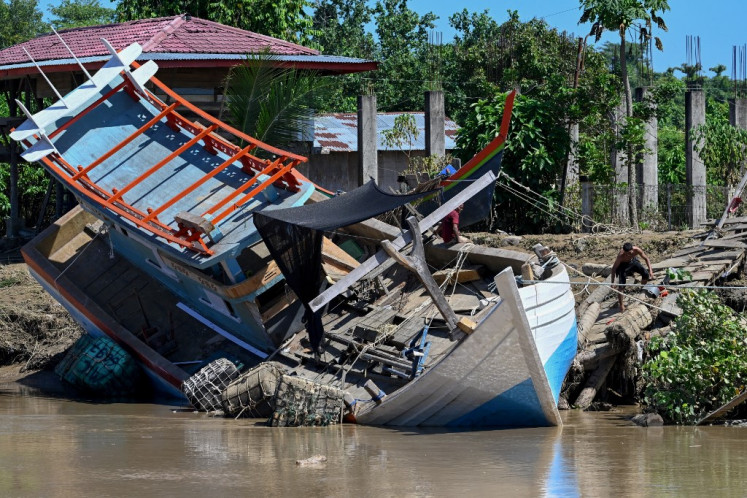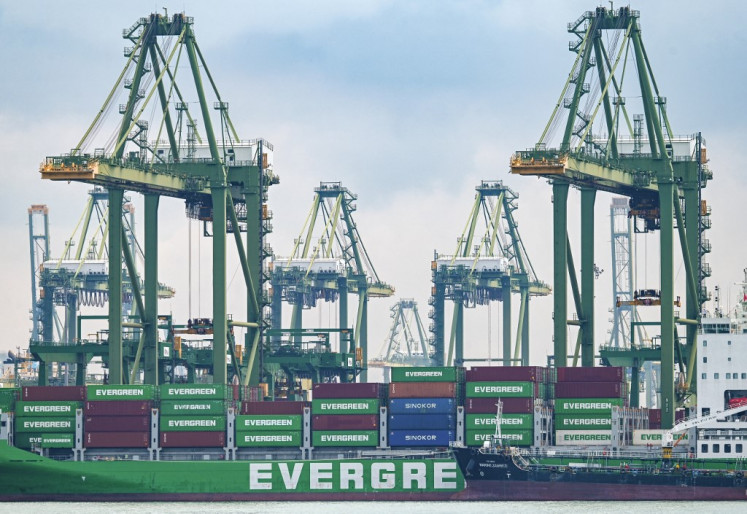Popular Reads
Top Results
Can't find what you're looking for?
View all search resultsPopular Reads
Top Results
Can't find what you're looking for?
View all search resultsTurtle Bay offers everything but the turtles
The boats along the beach - named after the large population of turtles that used to nest here - belong to some 35,000 fishermen in the regency, home to 1
Change text size
Gift Premium Articles
to Anyone
T
he boats along the beach - named after the large population of turtles that used to nest here - belong to some 35,000 fishermen in the regency, home to 1.7 million people.
Nowadays, the name is all that's left of the turtles.
"I don't know why, but no more turtles are spotted in Cilacap. My grandfather told me there used to be many of them on the beach," said 25-year-old fisherman Wasikun.
Turtles or no turtles, the beach's panoramic view is undeniably beautiful. But it is only one of many attractions offered up by Turtle Bay.
If you like fishing, it is also the right place to go. No need to take a boat out to sea - you can simply fish along the wave-breakers.
With a strong but harmless current and waves, beach visitors are allowed to swim and play along the beach.
The beach is located in South Cilacap district, 2 kilometers east of the heart of Cilacap regency. From the city, you can drive here or take public transportation.
For Jakarta residents, the drive out here can take around six or seven hours. Visitors from Yogyakarta can make it here in just three to four hours.
You can also take a train, get off at Purwokerto and take a bus that will take you to Cilacap in about 90 minutes.
With a Rp 3,000 (30 US cents) entrance to Turtle Bay, you can enjoy yourself until late at night.
If you don't have the urge to go home just yet, you can always call it a night at one of the hotels located near the beach.
Various kinds of seafood dishes and souvenirs are available at the shops along the beach that stay open until midnight.
You might want to try grilled fish, the signature food, while enjoying the evening view and the cool breeze.
Across the beach, another tourist site awaits you: Benteng Pendem, or the underground fort. Built during the Dutch colonial era, the fort is a collection of hundreds of rooms under a strong concrete roof.
You can also visit the nearby Nusakambangan Island, located 700 meters south of Turtle Bay, or a five-minute boat ride. It remains "home" to around 1,000 inmates under maximum security.
Nusakambangan Island, 30 kilometers long and 7 kilometers wide on average, serves as a natural fort that protects the beach and the city from waves big and small.
In 2006, when a tsunami smashed into West Java's Pangandaran area, killing hundreds of people, Turtle Bay remained intact, while other coastal areas like Ayah Beach in Central Java's Kebumen area saw dozens of casualties.
Between Nusakambangan and Turtle Bay is Segara Anakan, which boasts vast mangrove forests and rare fish.
"This year, we will further develop Turtle Bay's marine tourism. In addition to the natural potential offered by the ocean, we will also build a swimming pool near the beach," said Cilacap administration spokesman Aris Munandar.
The administration plans to combine marine, land, cultural and spiritual tourism, inviting interested investors in the project.










